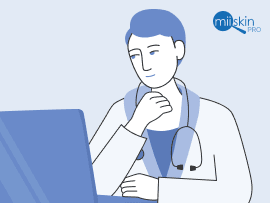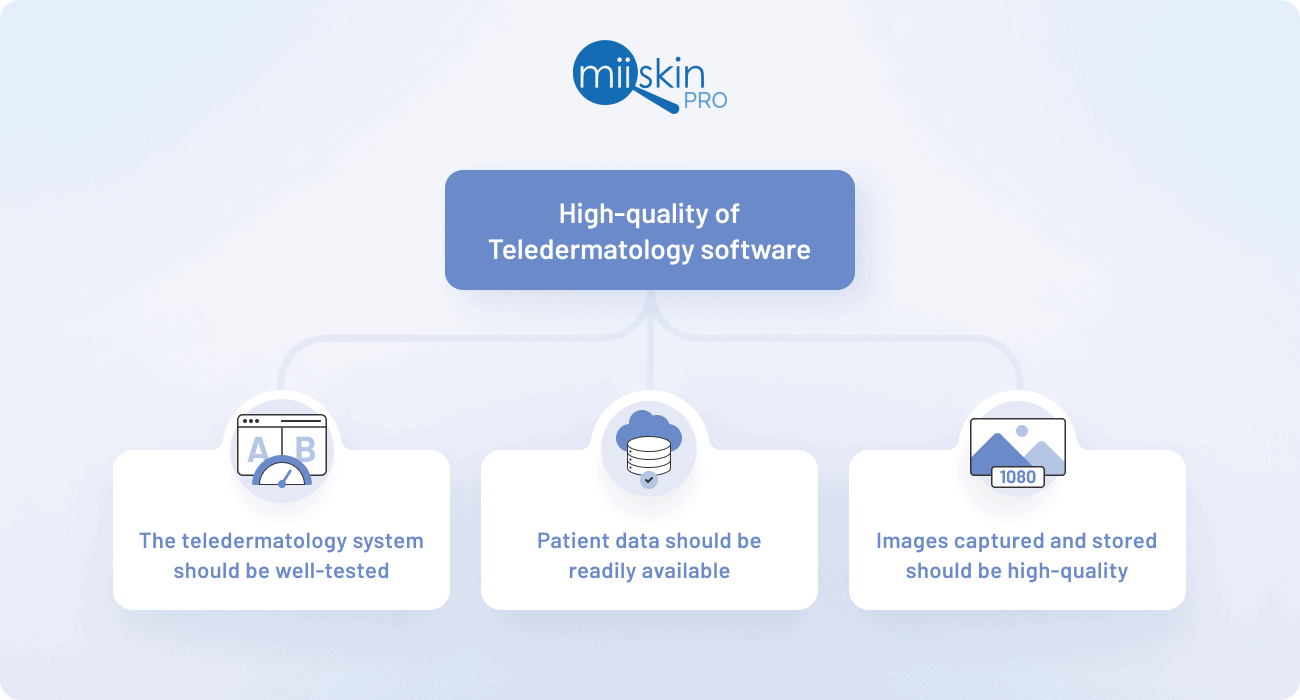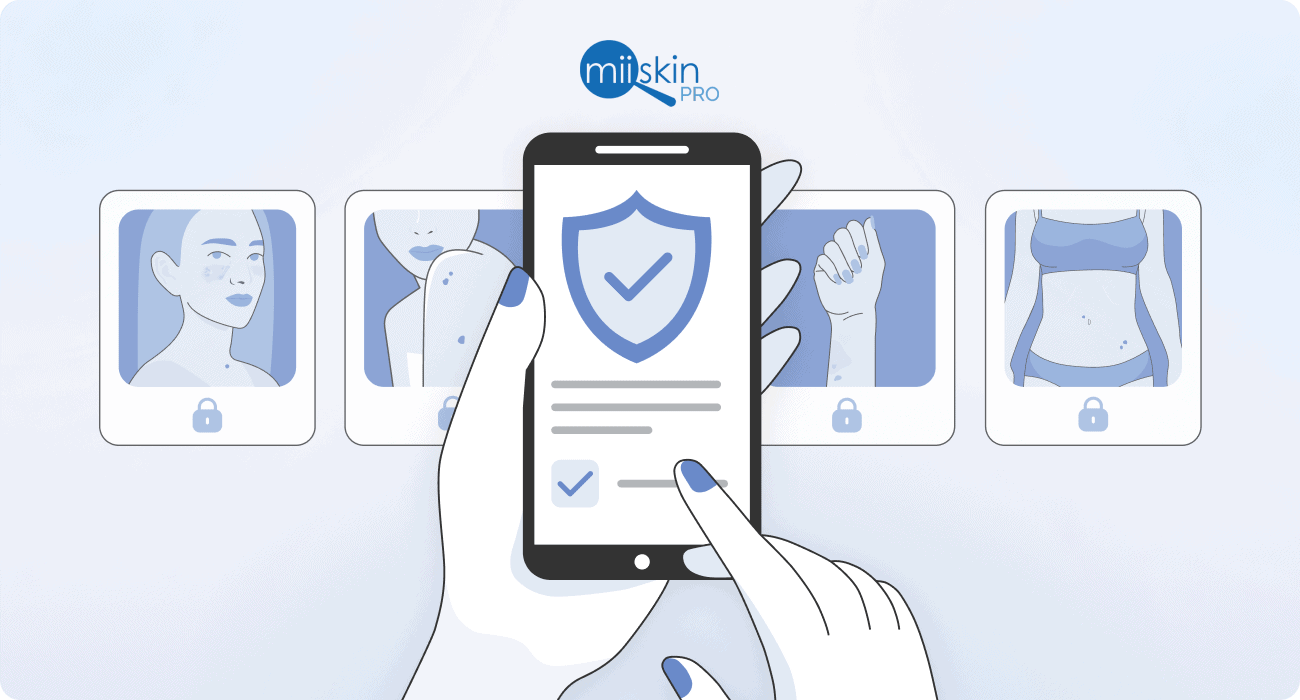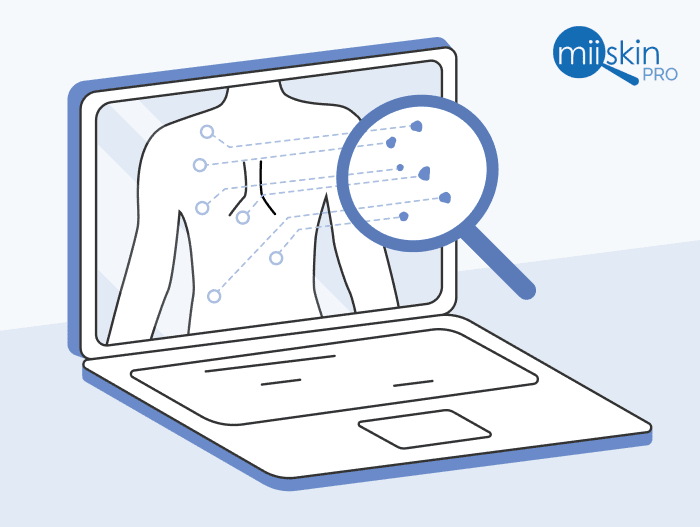Teledermatology Software: Choosing Telehealth for Dermatology
Successfully choose and implement telemedicine in your dermatology clinic. Learn about teledermatology software systems. Usability, quality, data privacy, consent, and reimbursability are key topics to consider.
Author: Jon Friis, founder and CEO of Miiskin
Covered in this article:
Selecting teledermatology software | Telehealth guidelines for dermatology | Considerations when choosing a teledermatology software | Teledermatology software solution
Are you considering investing in teledermatology software? Many dermatologists know that implementing telemedicine is a great way to attract more patients to their clinic and boost their business, which is especially important when starting a new dermatology practice.
But choosing the right dermatology software and the right telehealth software for dermatology can be tricky, as many of the systems available on the market vary significantly in price, features, and quality.
Choosing the Right Teledermatology Software
Finding a telehealth software for dermatology that fits your needs, the needs of your patients, and complies with regulations can be a challenge. Therefore, we have put together a summary of what to consider when choosing and implementing a dermatology telemedicine software in your practice.
But it’s well worth taking up teledermatology in your practice for pediatric and adult patients. Besides, the teledermatology reimbursement rate is now equivalent to in-person consultations by most of the largest insurance companies in the U.S.
MIISKIN PROMO
Attract New Patients to your Medical Practice with the Miiskin platform
Skin Health Solution for Providers
Boost patient acquisition: The Miiskin website is visited by 250,000 patients every day; offer these patients care delivered by your practice.
Automate patient intake: Patients can fill out any intake forms, make payments and give consent via the Miiskin app.
Offer efficient care delivery: Triage patients, renew prescriptions and make routine visits more efficient with an asynchronous telehealth solution.
Telehealth Guidelines for Dermatology
A key thing to consider in a system is that it should be compatible with the guidelines set out by the leading teledermatology experts. Organizations, such as the American Medical Association (AMA), the American Academy of Dermatology (AAD), and the British Association of Dermatologists (BAD), have published guidelines for telehealth systems in dermatology. Most countries should have similar policies.
You can find some of the guidelines here:
- Telehealth Quick Guide from American Medical Association
- American Academy of Dermatology Position Statement on Teledermatology
- U.K. – Primary Care Commissioning – Quality Standards for Teledermatology using Store-and-forward Images
If you are based in another country, you should get informed about the telemedicine guidelines recommended in your country.
Main Things to Consider When Choosing a Teledermatology Software for Your Practice
1. Usability is Key
Usability is the term used to assess how easy a user interface is to use; the term also refers to methods for improving the ease of use during the design process.1
Five quality components define usability:
- Learnability: How easy is it for users to complete basic tasks the first time they use the dermatology telehealth software?
- Efficiency: Once users are familiar with the design, how quickly can they perform specific tasks?
- Memorability: When users return to the teledermatology software after not using it for a while, how fast can they reestablish proficiency?
- Errors: How many errors do users make, and how easily can they recover from them?
- Satisfaction: Do users have a good experience using the software for teledermatology2?
This is often an area that is overlooked because the creators of dermatology telehealth software are often medical, legal, and technical experts who focus more on their areas of expertise than the user experience.
It is vitally important to get the user experience right. Any telehealth dermatology software will fail if patients and providers find it difficult and inconvenient to use.
Whether it is a mobile teledermatology system, a web-based solution, or a combination of both, user experience is critical.
2. Ensure System Quality
Another key point to take into consideration is if the quality of the technical implementation is sufficient.
Three critical areas are critical to consider:
- The teledermatology platform should be well-tested. Users might quickly lose motivation when they encounter an error-prone platform. If there are too many interruptions and the system doesn’t work as intended, the user experience will be highly affected.
- Patient data should be readily available. All patient data must be readily available since valuable information is shared and may be needed at a later stage for compliance and reimbursement purposes.
- Images captured and stored should be high-quality. If the dermatology telehealth platform captures photos or videos, the clarity and quality of the digital images or video stream are important. Video streams can be problematic due to poor data connections in mobile phone-based teledermatology.
A bad connection causes video images to be unclear and useless. That being said, an image-based solution helps dermatologists get a better view of a rash or lesion on the skin.
Fortunately, the cameras of most of today’s smartphones are perfectly suited and meet the requirements in recommended guidelines. A well-designed telehealth software for dermatology enables users to take good photos with the help of computer vision and artificial intelligence.
3. Adhere to Data Privacy Laws
In any health tech solution, data privacy is critical. Data privacy is the right of the individual to know:
- The type of information that is being collected
- The purpose of the data collection
- Freedom to opt-out from an undesired intrusion of your data
Data privacy regulations ensure the proper and transparent handling, processing, access, storage, and usage of the patients’ private data.
Security and data shielding ensure how data privacy is enforced to secure your privacy and the prevention of unwilling intrusion.
This includes:
- Storage encryption
- Transport encryption
- Network security
- Identity management and secure authentication
- Access control and audit logs
- Breach response
In the United States, all health-related information is protected under the Health Insurance Portability and Accountability Act of 1996 (HIPAA).
HIPAA is a federal law enforced in the U.S. that protects sensitive patient health information from being disclosed without the patient’s consent or knowledge.
In the European Union, patients’ data privacy is protected by the General Data Protection Regulation (GDPR.)
However, it’s important to pay attention to the additional GDPR requirements for sensitive health information. Those requirements may include strict adherence to patient consent and an extra high focus on data shielding and security.
4. Gather Patient Consent
Ensuring a patient’s consent to use their data is essential when collecting data. To do this, the system should explain how and for what purpose the data will be used before processing the information in a teledermatology context.
Patients must give consent to healthcare providers so they use their photos for care delivery. After patients have given their consent, the information and images can be used for a teledermatology consultation.
5. Coordinate with the Existing Care Team
It is important that all information collected can be saved to the patient’s record, and that it is also available to the existing care team.
A superior teledermatology software solution
The Miiskin teledermatology software solution caters to dermatology, primary care, and clinical research. This innovative software solution serves private clinics, health systems, and contract research organizations.
Comprising of both the Miiskin app for patients and a clinical web portal for healthcare providers, it facilitates various virtual care services, including patient consultations, patient triage, prescription renewal visits, and follow-up care for those with chronic skin conditions.
The technology provides three primary advantages:
- Significantly reduces patient waiting time from several weeks to less than 48 hours.
- Offers healthcare providers greater scheduling flexibility.
- Complements traditional in-person appointments effectively.
How does Miiskin the Miiskin software solution work?
Patients use the Miiskin app to enter their details, take high-quality skin photos of their skin condition, and agree to share this information with their clinic to request a virtual consultation.
Whenever they have the time, providers can log in to the Miiskin web portal, review their patients’ requests, and deliver virtual asynchronous care. These consultations take much less time, enabling dermatologists to review up to 20 patient cases per hour.
Through the platform, providers can also triage patients virtually. Afterward, they can schedule in-person consultations with patients who need urgent care; for example, if the dermatologist sees a photo of a patient with a suspicious-looking mole.
Patients attached to a clinic can also request a virtual prescription refill visit via the Miiskin App. They need to enter their details, fill in their chief complaint, answer a clinical questionnaire, and upload photos of their skin condition.
Providers can review these medication requests on the web portal. If they deem it adequate, they can renew the prescriptions online. They can also decide upon another course of action for the patient, such as scheduling an in-person visit. This way, dermatologists can renew four times as many medication renewals as they would with in-person consultations.
Clinics in the U.S. are using the Miiskin platform to deliver virtual dermatological care, and get reimbursed at the same rate as physical consultations.
Are you a dermatologist who wants to learn more about teledermatology?
Check out our articles on Teledermatology
Teledermatology: Bridging the gap in dermatological care
Miiskin the future of teledermatology: What four dermatologists learned firsthand
How store and forward telehealth supports direct-to-consumer healthcare
7 Teledermatology apps doctors should know about
5 Teledermatology companies to choose from based on your needs
Choosing the right teledermatology software








 Interested in the Miiskin platform?
Interested in the Miiskin platform?